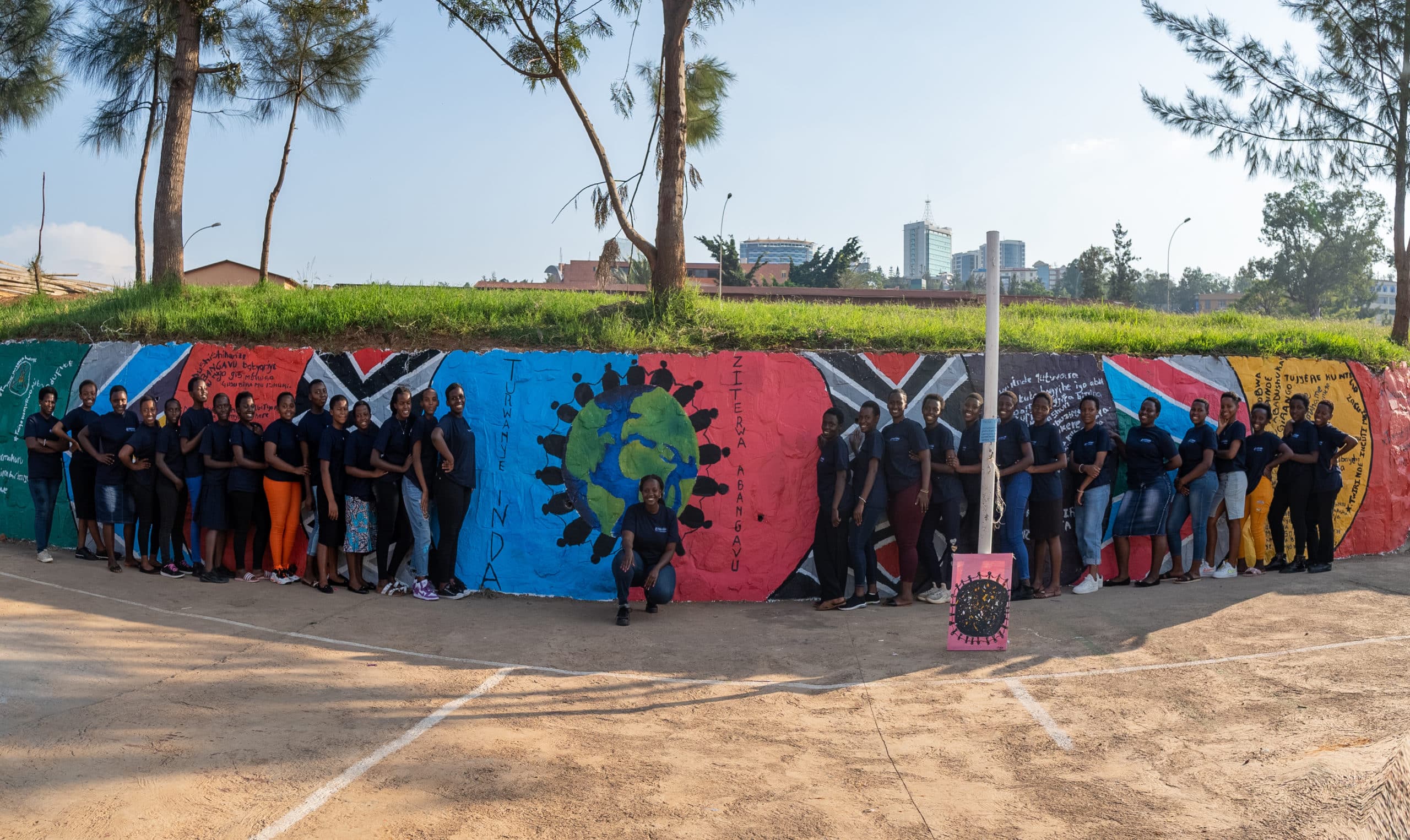Jemima Kakizi Akimanizanye is adding to Rwanda’s aesthetic appeal with her transformative art and addressing the country’s youth population on the cusp of change.
By Caissy Christine Nakure
The tiny East African country of Rwanda is known for its rolling hills, verdant valleys and immaculate green spaces.
Now there is art too complementing the country’s incredible visual appeal, thanks to the efforts of multidisciplinary artist Jemima Kakizi Akimanizanye.
Hired by UNICEF Rwanda for a project to create items that encourage young children to learn about climate change through art, Akimanizanye was inspired to start her own journey making a difference with the paintbrush.
Loading...
Her experience with UNICEF challenged her to think beyond her art, to use her talent to also address issues in her community.
“When I was introduced to environment issues, and that there are things we can do to fight climate change, I saw a huge contribution that I could make, which is when I started art installations using plastic and waste,” says Akimanizanye to FORBES AFRICA.
The 30-year-old, who likes painting early in the morning, was destined for the art world. At a young age, she would create interesting objects from anything she could lay her hands on. These included handmade jewelry and pieces of clothing she would later offer to friends and family.
Growing up, she went to an art school in Rwanda’s Western Province three and half hours from her home in the city of Kigali. She always wanted to become an artist but didn’t know where and how to start.
She started with people’s portraits, and when she sold her first work, realized it could become her full-time occupation. Word about her work spread.
Today, she has espoused serious causes and is using art for advocacy.
“There are a lot of things still considered taboo in our society, like reproductive health, sexual harassment, gender-based violence, mental health and for our society to change, we need education as a new generation; children are exposed to the internet and they might come across the wrong information, that is why I use art to communicate about these things,” says Akimanizanye, addressing the country’s burgeoning youth population.
“I want to start these conversations because I want to see change in my community. Children will not come to you [when] you are not open to those conversations, which is why you see a lot of early pregnancies and sexual violence.”
Over the last couple of years, Akimanizanye has taken the lead to become the voice of female artists wanting the visibility they deserve, compared to their male counterparts.
Akimanizanye has been organizing exhibitions to showcase art speaking to social issues. She has also brought female visual artists together to create a collective platform.
“We need to wake up, take up space and stop complaining, that is why I started creating exhibitions for female artists. Ever since, we are seeing a huge difference and the sales have increased. It was something I had thought of for years but was afraid to do, but now, I am happy I took that initiative.”
Sourcing quality materials to enable her work has also been a challenge, as they need to be imported from abroad.
Opportunities abound for investors in the growing sector though, as Rwanda only has one art school, Ecole d’Arts de Nyundo, located in Rubavu District in the Northern Province. The creative industry has been evolving in the country. The government’s ‘Made in Rwanda’ policy has encouraged the public and private sectors to support local artists, and promote their products in the local and international markets.
“You can heal through art, you can learn. A lot is happening and we shouldn’t be left behind,” says Akimanizanye. “Because I had people who supported me, I love supporting others and see them grow; it makes me happy and though we appreciate what has been done, we need more support to grow further.”
Loading...
